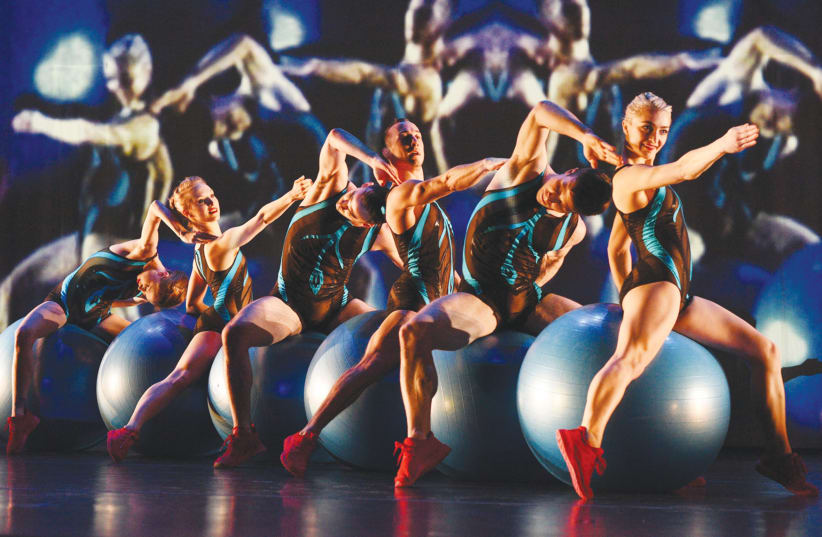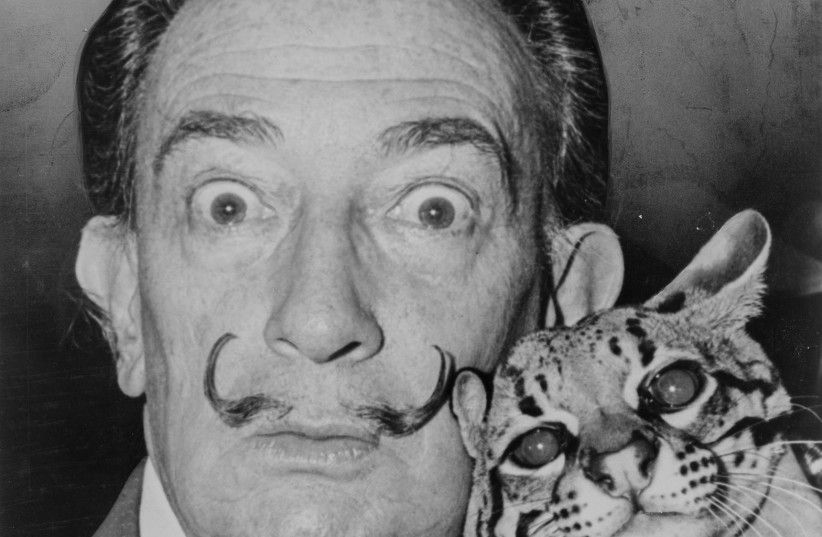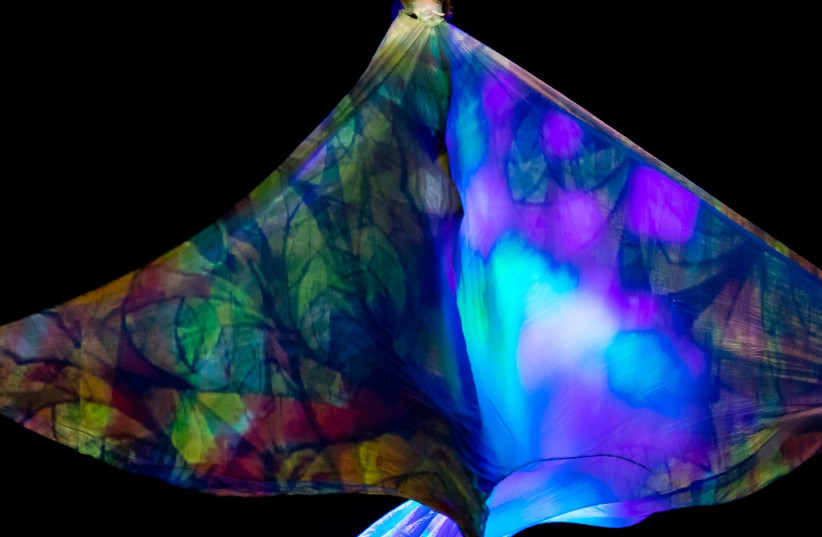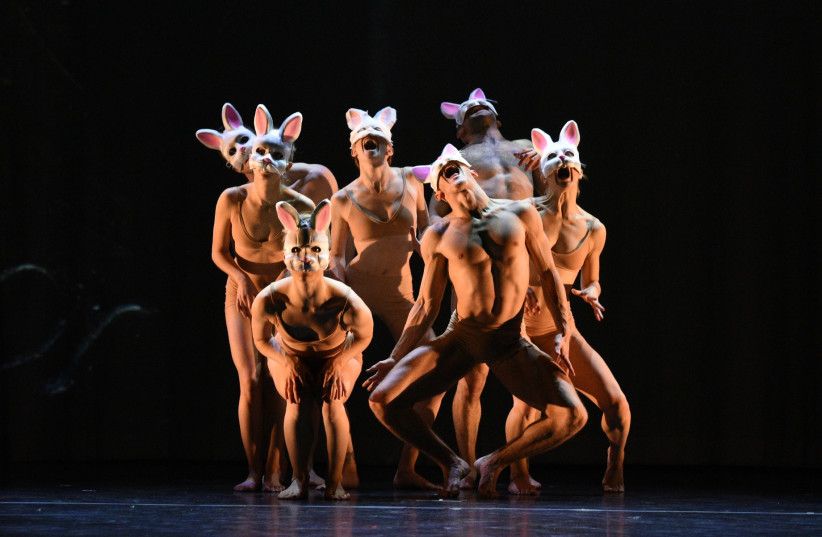“I think Alice chose me – chose us,” says Moses Pendleton, founder and choreographer of Momix, which returns to Israel next month with Alice.
Known for its illusionist extravaganzas, Momix, founded by Pendleton 42 years ago, has turned to Alice in Wonderland as inspiration for their latest show, created by Pendleton and his associate director Cynthia Quinn.
“We’ve been involved with Alice for maybe 25-30 years, since our daughter queen Elizabeth and I, together with the Nutmeg Ballet, put together a little piece for young girls called ‘The Mad Hatter’s Tea Party,’” says Pendleton, speaking to The Jerusalem Post from his Connecticut home.
“Alice and Lewis Carroll have been on my mind for quite a while, and you know there’s a connection with the nonsense, the surreal. Many times in the past, people have looked at our work and said that is very Alice in Wonderland-like. That’s very Momix-like. So Momix and Lewis Carroll and Alice, and the world of surrealism, are partners in a way – have been for a long time.
“The way to describe Momix is also a way to describe the world of the nonsensical, surreal world that Lewis Carroll provided. He wrote Alice in Wonderland, but Alice was always meant to be interpreted visually. In fact, Carroll’s ultimate aim wasn’t the book, but to have it produced in London’s theaters as a musical. And he oversaw a hundred versions of it as live theater pieces. Many people have been interpreting this work, including Disney and Tim Burton, and more interestingly also Salvador Dali, who was commissioned to do a visual interpretation of Alice.
“In the show, we didn’t try to tell the story literally. We used it as a kind of stepping-stone into our own collective rabbit holes, and into our own series of fantasies and illusions. Hopefully, people can go away and not really feel that we showed them how the world is, but rather how it might be in a fantasy.”
His inspiration did not start with Alice in Wonderland the book
Pendleton admits that his inspiration did not start with the book. “I was grown and weaned and dined on Disney’s version of Alice in Wonderland. You know the images of the blue caterpillar and the Cheshire cat – all of these were indelible images in my mind. In my generation, there wasn’t a child who didn’t see the film, so those were my images of Alice – the Disney [film] more than the book,” he says.
“I was grown and weaned and dined on Disney’s version of Alice in Wonderland. You know the images of the blue caterpillar and the Cheshire cat – all of these were indelible images in my mind. In my generation, there wasn’t a child who didn’t see the film, so those were my images of Alice – the Disney [film] more than the book.”
Moses Pendelton
“It was fascinating for me to do the research four or five years ago. Reading about the book and Lewis Carroll got me interested in it again. But it was Disney that inspired me when I was young; it was Disney that answered questions along the long-winded way.”
ALICE LENDS itself to Pendleton’s surrealist treatment. The show doesn’t really have a narrative. Instead, it moves through a series of dances that encapsulate different parts of Carroll’s book.
The work is a feat of artistic achievement. The dancers seem almost superhuman, but there are no tricks involved. Everything you see is a product of visionary ideas, creative projections, amazing costumes and props, and bodies with extraordinary technique and ability.
Throughout the show, Alice is embodied by all five Momix female dancers, barefoot in delicate, white chemises, with their hair hanging loose. It is almost impossible to tell them apart.
The opening scene, “Summer Day,” is set against a projection of an idyllic English landscape. A girl in a white dress reads a book titled Alice, turned upside down. She’s sitting on one end of a ladder while the other end is manipulated by a bow-tied dancer. She soars high, then she comes down. The book falls. Her feet touch the ground.
It’s a sweet and playful start to the show, but by the time it ends you realize that someone is playing with your head, and that by the end of the show you may find yourself tumbling down a rabbit hole, headfirst.
From there, it’s a string of psychedelic imagery. Scenes follow each other as the dancers perform their imaginative, acrobatic parts. We encounter a herd of rabbits, a trio of Mad Hatters, and a few angry queens clad in playing-card suits. The Blue Caterpillar is a snaking lineup of large, blue exercise balls, which eventually separate to be manipulated and bounced by the troupe, as reflections of the balls fill the background
In a scene called “The Tweedles,” four dancers wear giant cardboard cutouts of babies’ faces, which look bizarre and alien. The darkest scene is the “Cracked Mirrors,” in which reflective props and clever lighting work together to disorient the viewers.
Projected backdrops transport the audience to the beach, or the jungle. Doors open and close and the chaotic soundtrack conjures a sense of a surreal, magical world. Toward the end of the show, Grace Slick’s song “White Rabbit” lends a lyric to the title of the choreographer’s closing episode, “Go Ask Alice.” In that beautiful scene, Seah Hagan, one of the five “Alices,” rises above the stage a good “10 feet tall” (to quote the song), in her now lengthened, shimmering chemise.
This is a show that takes viewers down Carroll’s famous rabbit hole, and guides them out and through a visual world filled with fanciful sights from Alice’s stunning wonderland.
Alice is physically demanding, and the small cast of dancers deserves credit for carrying its heavy load, with no sign of tiredness.
“We didn’t try to tell the story literally. We used it as a kind of stepping-stone into our own collective rabbit holes, if you will, and into our own series of fantasies and illusions. Hopefully, people can go away and not really feel that we showed them how the world is, but rather how it might be in a fantasy, and in this case the feeling of going down your own rabbit hole,” Pendleton says.
“The imagination is all important, really,” he concludes. “The mind of a child is a mind we should not lose, and maybe that’s a lesson. We can all imagine and we can all have fun and be involved with the mysteries and nonsense. The wildness of every breath is worth examining. The stage is the true wonderland and the audience is like Alice. They are invited – Momix invites them – into wonderland.”
Momix’s Alice will be performed around the country from December through January. For details and tickets go to bimotglobal.co.il/alice-momix.















